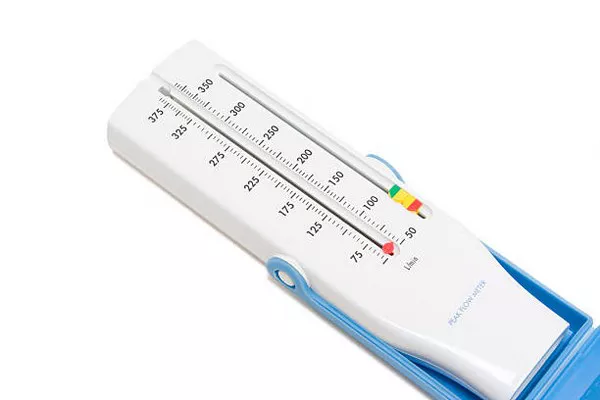Aneroid barometers, critical tools in meteorology, aviation, and navigation, provide accurate atmospheric pressure readings without the need for liquid. Their innovative design, reliability, and portability have made them indispensable since their invention in the mid-19th century. This article delves into the intricate workings of an aneroid barometer, exploring its components, operational principles, historical significance, and contemporary applications.
Historical Background of Aneroid Barometer
The invention of the aneroid barometer is credited to Lucien Vidi, a French scientist, in 1844. Before Vidi’s invention, barometers primarily relied on mercury, following Evangelista Torricelli’s pioneering work in 1643. Mercury barometers, while accurate, were cumbersome and posed significant health hazards due to mercury’s toxicity. Vidi’s aneroid barometer offered a safer and more practical alternative, revolutionizing atmospheric pressure measurement.
Fundamental Components of Aneroid Barometer
An aneroid barometer consists of several key components, each playing a crucial role in its operation:
Aneroid Capsule: At the heart of the device is a small, flexible, sealed metal capsule called the aneroid cell or capsule. Typically made from an alloy of beryllium and copper, this capsule is partially evacuated, creating a vacuum inside.
Mechanical Linkage: The capsule is connected to a series of mechanical levers and springs. These components amplify the minute movements of the capsule and transmit them to the indicating needle.
Dial and Pointer: The amplified movement drives a pointer across a calibrated dial, which displays the atmospheric pressure. The dial is usually marked in units of pressure such as millibars (mb) or inches of mercury (inHg).
Adjusting Screw: Many aneroid barometers feature an adjusting screw that allows for calibration. This ensures the accuracy of the instrument by compensating for changes in the elasticity of the metal over time.
Operational Principles of Aneroid Barometer
The operation of an aneroid barometer is based on the physical principle that the capsule expands and contracts in response to changes in atmospheric pressure. Here’s a step-by-step explanation of how it works:
Pressure Changes: When the atmospheric pressure decreases, the external pressure on the capsule lessens, causing the capsule to expand. Conversely, when the atmospheric pressure increases, the capsule is compressed.
Mechanical Movement: These expansions and contractions are minute but significant. The mechanical linkage system attached to the capsule magnifies these small movements.
Pointer Movement: The amplified movements are then transmitted to the pointer on the dial. As the capsule expands or contracts, the pointer moves accordingly, indicating the current atmospheric pressure.
Reading the Dial: Users can then read the pressure value directly from the dial. The precision of the aneroid barometer allows for accurate readings necessary for weather forecasting and other applications.
Advantages Over Mercury Barometers of Aneroid Barometer
Aneroid barometers offer several advantages over their mercury counterparts:
Safety: Without mercury, aneroid barometers eliminate the risk of mercury poisoning, making them safer for widespread use.
Portability: The compact design of aneroid barometers makes them easy to transport and use in various settings, including fieldwork.
Durability: Aneroid barometers are less susceptible to damage from physical shocks compared to the fragile glass tubes of mercury barometers.
Calibration and Maintenance of Aneroid Barometer
Regular calibration is essential to maintain the accuracy of an aneroid barometer. Over time, the metal capsule and mechanical parts may experience slight changes in their physical properties. Calibration involves adjusting the screw to align the pointer with a known pressure reference, ensuring continued precision.
Additionally, maintenance involves protecting the barometer from extreme temperatures and humidity, which can affect its accuracy. Dust and debris should also be kept away from the mechanical components to prevent interference with the movement.
Applications in Various Fields of Aneroid Barometer
Meteorology: Aneroid barometers are fundamental in weather forecasting. Meteorologists use them to monitor atmospheric pressure trends, which are crucial for predicting weather changes. A drop in pressure often indicates an approaching storm, while rising pressure suggests fair weather.
Aviation: Pilots rely on aneroid barometers, often integrated into altimeters, to determine altitude. Since atmospheric pressure decreases with altitude, an aneroid barometer can provide critical information about a plane’s height above sea level, essential for safe navigation.
Navigation: Mariners use aneroid barometers to anticipate weather changes at sea. Accurate pressure readings can warn of approaching storms, allowing for timely course adjustments to ensure safety.
Scientific Research: Aneroid barometers are also used in various scientific experiments where precise atmospheric pressure readings are required. Their accuracy and reliability make them suitable for controlled laboratory settings as well as field research.
Technological Advances
Modern aneroid barometers have benefited from technological advancements, enhancing their accuracy and functionality. Digital aneroid barometers, for instance, incorporate electronic sensors and microprocessors. These devices can provide more precise readings and often include features such as data logging, trend analysis, and integration with weather monitoring systems.
See Also How Does A Flow Meter Work
Conclusion
The aneroid barometer, with its intricate yet robust design, stands as a testament to human ingenuity in measuring atmospheric pressure. Its invention marked a significant advancement over mercury barometers, offering a safer, more portable, and equally accurate alternative. Today, aneroid barometers remain essential in various fields, from meteorology and aviation to navigation and scientific research.
Understanding how an aneroid barometer works provides insight into its critical role in everyday life and specialized applications. The expansion and contraction of the aneroid capsule in response to pressure changes, magnified by a mechanical linkage system, showcase a brilliant use of simple physical principles to achieve precise measurements. As technology continues to evolve, the aneroid barometer will likely see further improvements, ensuring its continued relevance and utility in the future.

